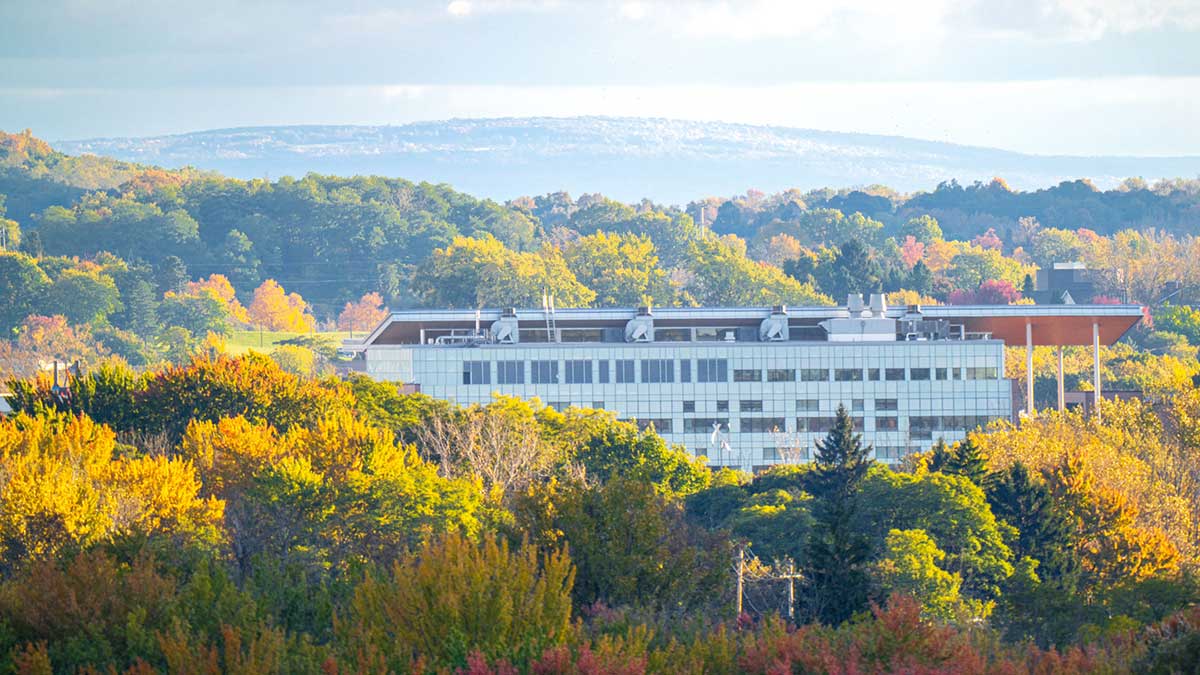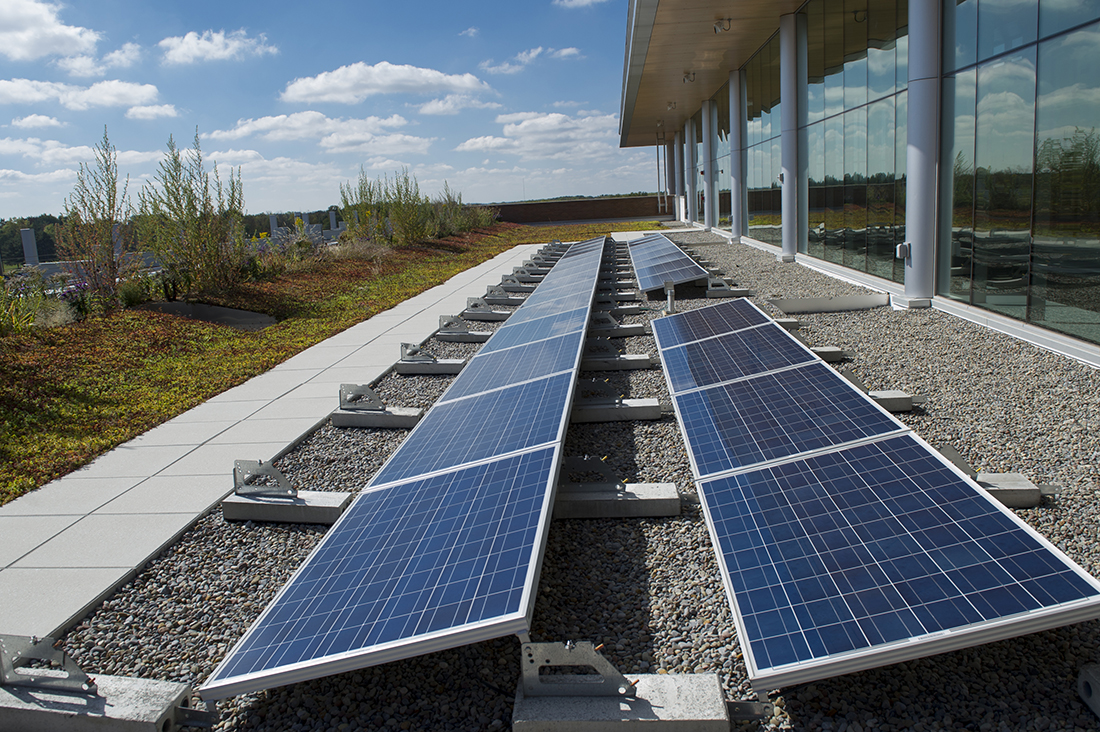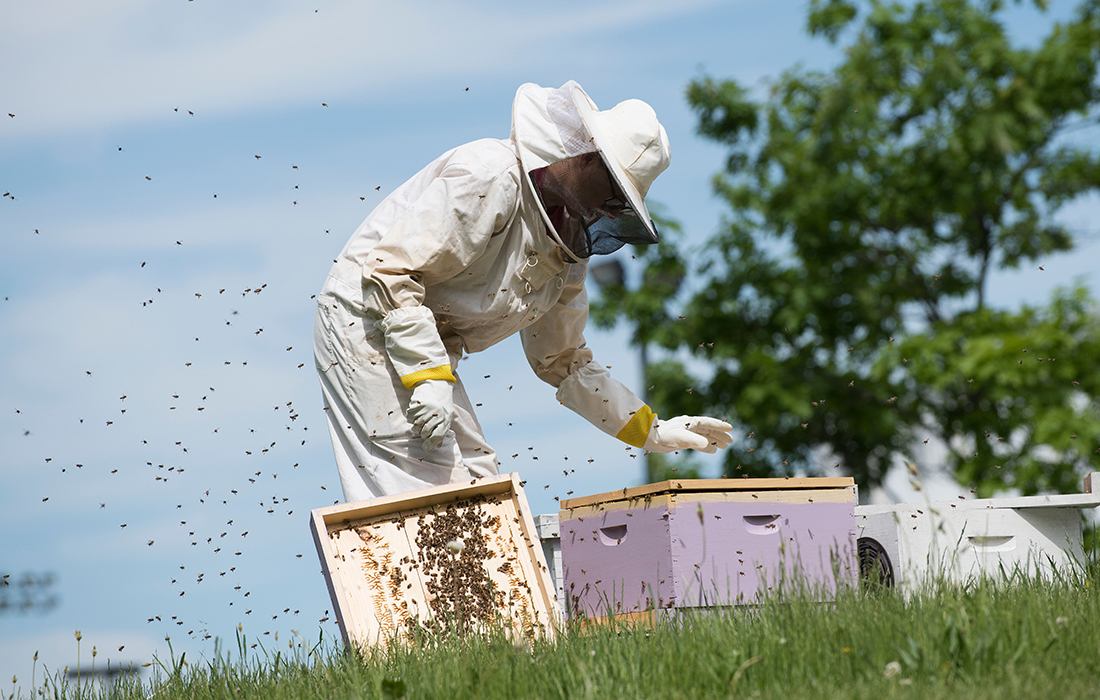Grounds
RIT’s campus is situated on 1,159 acres of land. On the 200 acres of Finish-Cut areas, the grounds staff employs integrated pest management. Landscape waste and brush are composted or mulched on site for use as topsoil, fill, and mulch around campus.
Green Infrastructure
When water from rain or snow melt is not absorbed into the ground, it flows across turf, lawns, streets, parking lots, roofs, and other impervious surfaces into the nearest water body. As the water “runs off” the land, it accumulates debris, chemicals, sediment, and other pollutants that can negatively impact water quality and aquatic ecosystems. To minimize these impacts, RIT is installing green infrastructure.
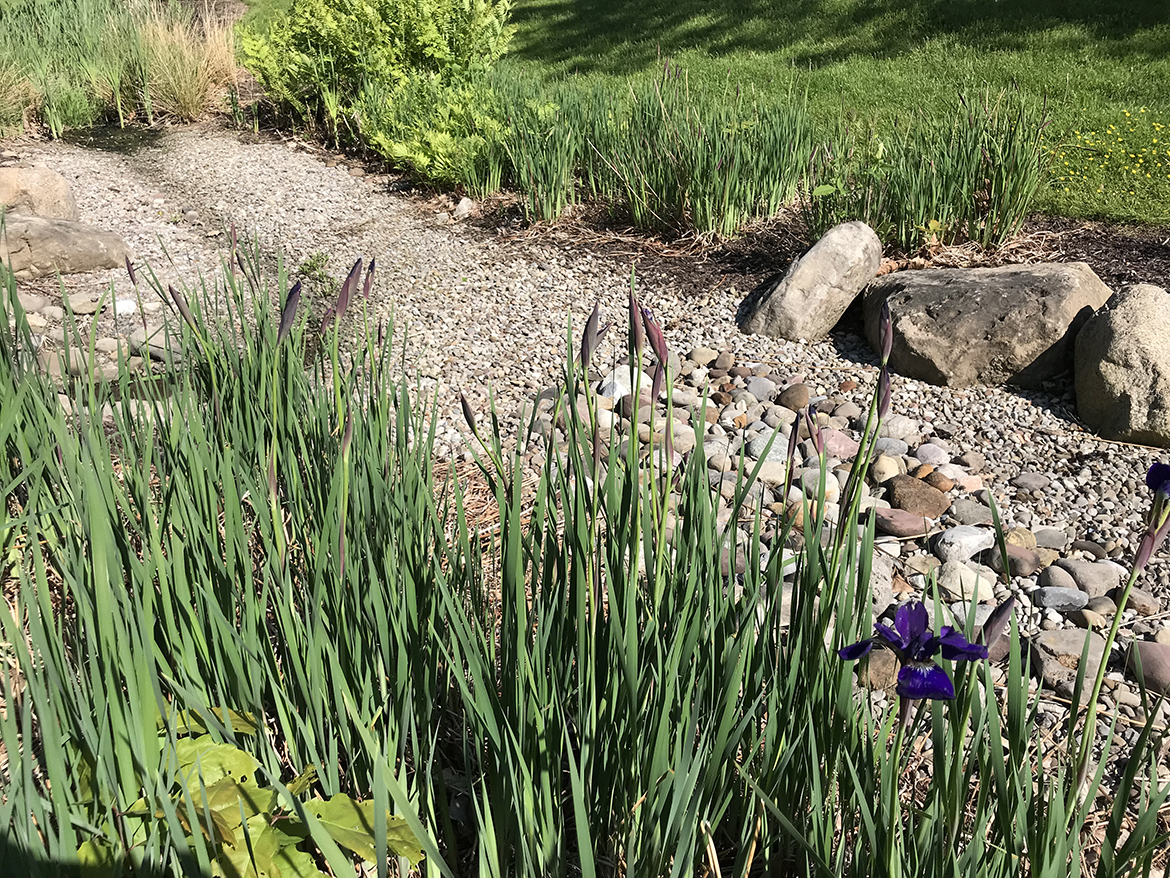
Eco Swales
When Perkins Green Apartments were renovated in 2009, a landscaped eco swale was installed to capture and treat the 1.2 million gallons of stormwater run-off coming from the building roofs and parking lots in the area each year. Integrated into the swale are varying sizes of rocks to aid in filtering particulates and a variety of hydrophilic (water-loving) plants, many of which can be found in the natural wetlands on campus. The project received an honor award from the American Society of Landscape Architects.
Since then, other eco swales, or rain gardens, have been installed, including Gleason Circle, the plaza in front of the Gene Polisseni Center and the east side of Institute Hall.
Building roofs have traditionally been designed to get rainwater off of them quickly and into the storm sewer. RIT is going against this tradition. Three buildings on campus have green roofs, which provide good insulation for the buildings and create habitats for pollinators.
A small section of the roof on Engineering Technology Hall contains a lightweight tray system that contain sedum plants. This was the first green roof installed at RIT.
On the walk out roof of Sustainability Institute Hall, there is a combination of green roof systems. The first is another light-weight tray system similar to the one on Engineering Technology Hall. The second is a deeper, intensive area along the outside perimeter of the roof that features plants that are important in the Monarch Butterfly lifecycle. The roof is part of the Seneca Park Zoo’s Butterfly Beltway project.
The third, also an intensive green roof, is located in Global Village on top of the Cantina and Grill. The grasses on this roof are planted in soil, which also serves as added insulation for the building.
Native Plants, Pollinators, and Wildlife
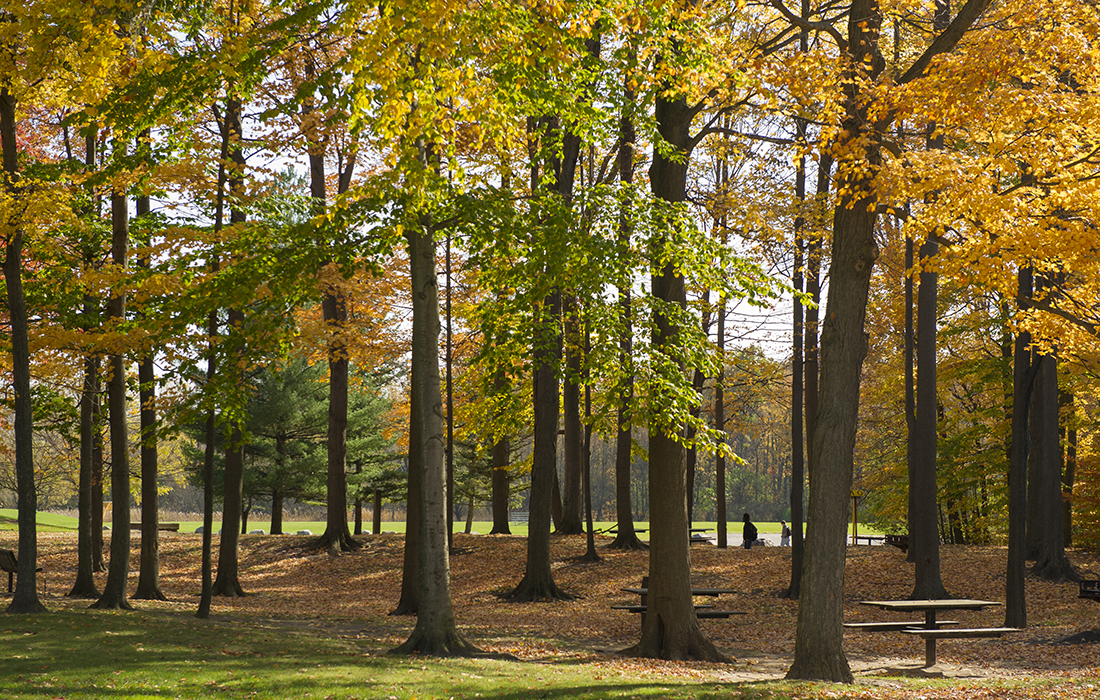
Native Plants
RIT uses native and non-invasive plants in the landscaped beds throughout campus. Once established, native plants typically require less maintenance and can better tolerate the weather extreme in our region. They also provide important habitat and food for the many wildlife species found on campus.
In support of RIT’s partnership with the Seneca Park Zoo, RIT has planted the zoo’s pollinator seed mix along several section of roadway on campus. The plantings are providing pollinator habitat as well as unique research opportunities. The RIT Bee Keepers club also maintains bee hives next to the community garden to help pollinate the plants in the garden and all around campus.
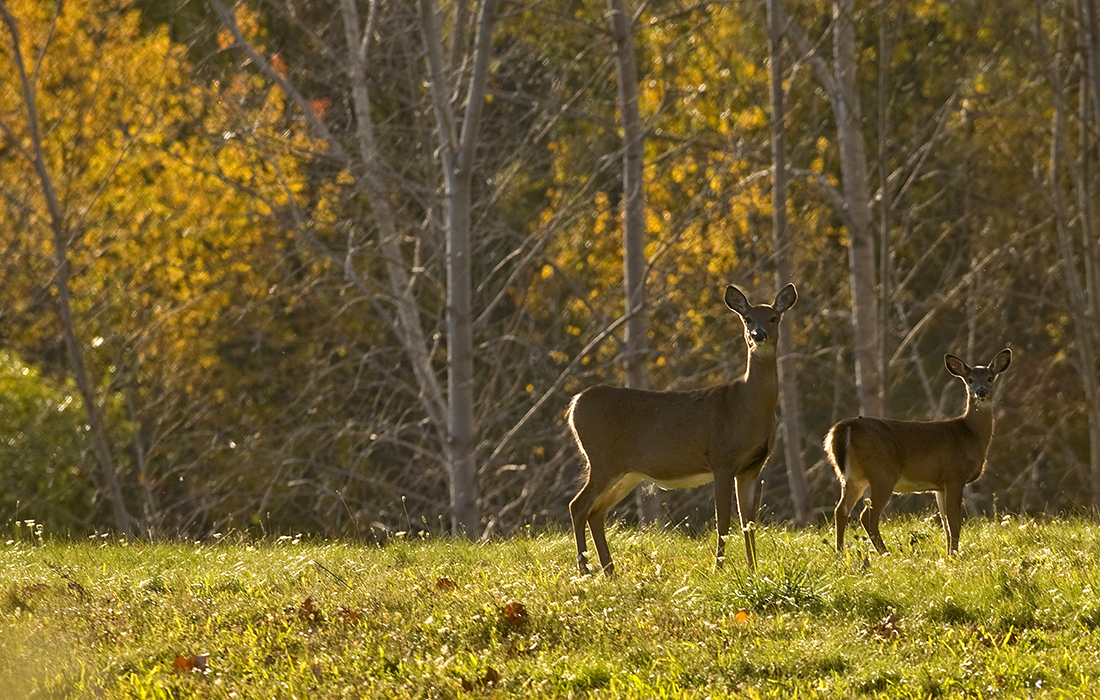
Wildlife
There is a wide variety of wildlife on campus! Take a walk through the nature trails located between Grace Watson Hall and the Community Garden and you will likely see several song bird species, frogs, and deer. Other commonly seen animals include red fox, heron, and ducks.



